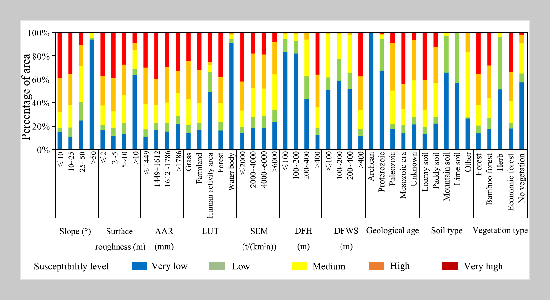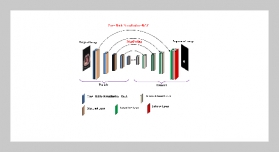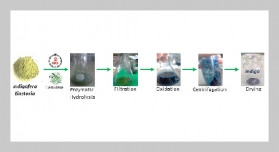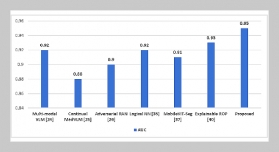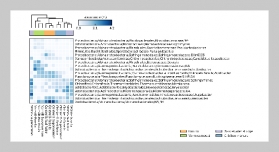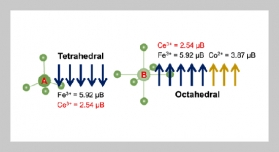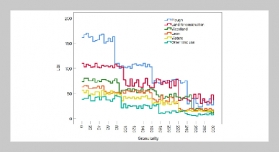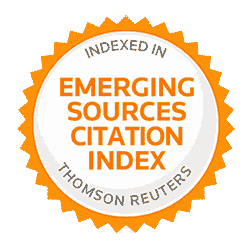- [1] J. Y. Li, W. D. Wang, G. Q. Chen, and Z. Han, (2022) “Spatiotemporal assessment of landslide susceptibility in Southern Sichuan, China using SA-DBN, PSO-DBN and SSA-DBN models compared with DBN model" Advances In Space Research 69: 3071–3087. DOI: 10.1016/j.asr.2022.01.043.
- [2] X.Y. Guo, B. H. Fu, J. Du, S. W. Qi, P. L. Shi, and X. K. Hou, (2023) “Enhancing post-seismic landslide susceptibility modeling in China through a time-variant approach: aspatio-temporal analysis" International Journal of Digital Earth 16: 4265–4295. DOI: 10.1080/17538947.2023.2265907.
- [3] R. Z. Zhang and R. G. Zuo, (2025) “Comparison of the geochemical characteristics of highly fractionated granites in South China and the Himalaya" Acta Petrologica Sinica 41: 1424–1441. DOI: 10.18654/1000-0569/2025.04.16.
- [4] H. Chen, L. S. Liu, P. Zeng, Y. Yang, T. Zhang, S. Liu, and S. M. Xia, (2024) “The dynamic damage pattern and fine-scale damage characteristics of weathered granite after ore leaching" Bulletin of Engineering Geology and the Environment 83: 238. DOI: 10.1007/s10064-024 03746-2.
- [5] Y. N. Du, P. F. Xu, and S. Q. Ling, (2018) “Microtremor survey of soil-rock mixture landslides : An example of Baidian township, Hengyang City" Chinese Journal of Geophysics-Chinese Edition 61: 1596–1604. DOI: 10.6038/cjg2018L0057.
- [6] J. H. Lee, H. Kim, H. J. Park, and J. H. Heo, (2021) “Temporal prediction modeling for rainfall-induced shallow landslide hazards using extreme value distribution" Landslides 18: 321–338. DOI: 10.1007/s10346-020-01502-7.
- [7] H. Q. Sun, W. Y. Li, M. Scaioni, J. Fu, X. Guo, and J. Gao, (2023) “Influence of spatial heterogeneity on land slide susceptibility in the transboundary area of the Hi malayas" Geomorphology 433: 1–15. DOI: 10.1016/j.geomorph.2023.108723.
- [8] T. H. Ren, L. Gao, and W. P. Gong, (2024) “An ensemble of dynamic rainfall index and machine learning method for spatiotemporal landslide susceptibility modeling" Landslides 21: 257–273. DOI: 10.1007/s10346 023-02152-1.
- [9] J. Zhang, Y. Cao, W. Fan, W. Zheng, Z. Wang, C. He, and H. Teng, (2024) “Spatial distribution characteristics and influence factor analysis of landslides —case study of the Hanwang area in Qinba Mountains" Earthquake Research Advances 4: 100275. DOI: 10.1016/j.eqrea.2024.100275.
- [10] F. Huang, Z. Teng, C. Yao, S.-H. Jiang, F. Catani, W. Chen, and J. Huang, (2024) “Uncertainties of landslide susceptibility prediction: Influences of random errors in landslide conditioning factors and errors reduction by low pass filter method" Journal of Rock Mechanics and Geotechnical Engineering 16: 213–230. DOI: 10.1016/j.jrmge.2023.11.001.
- [11] A. Erener, A. Mutlu, and H. Sebnem Düzgün, (2016) “A comparative study for landslide susceptibility map ping using GIS-based multi-criteria decision analysis (MCDA), logistic regression (LR) and association rule mining (ARM)" Engineering Geology 203: 45–55. DOI: 10.1016/j.enggeo.2015.09.007.
- [12] Z. Liao, J. Wang, G. Chen, and Y. Li, (2025) “Deformation-Related Data Mining and Movement Pat terns of the Huangtupo Landslide in the Three Gorges Reservoir Area of China" Applied Sciences 15: 4018. DOI: 10.3390/app15074018.
- [13] C. Yang, H. Zhang, X. Li, Z. He, and J. Li, (2023) “Analysis of spatial and temporal characteristics of major natural disasters in China from 2008 to 2021 based on mining news database" Natural Hazards 118: 1881–1916. DOI: 10.1007/s11069-023-06097-5.
- [14] D. S. Mwakapesa, Y. M. Mao, X. J. Lan, and Y. A. Nanehkaran, (2023) “Landslide Susceptibility Mapping Using DIvisive ANAlysis (DIANA) and RO bust Clustering Using linKs (ROCK) Algorithms, and Comparison of Their Performance" Sustainability 15: 4218. DOI: 10.3390/su15054218.
- [15] X. Y. Wu, Y. B. Song, W. Chen, G. C. Kang, R. Qu, Z. F. Wang, J. X. Wang, P. Y. Lv, and H. Chen, (2023) “Analysis of Geological Hazard Susceptibility of Landslides in Muli County Based on Random Forest Algorithm" Sustainability 15: 4328. DOI: 10.3390/su15054328.
- [16] A. Si, J. Q. Zhang, S. Q. Tong, Q. Lai, R. Wang, N. Li, and Y. B. Bao, (2018) “Regional Landslide Identification Based on Susceptibility Analysis and Change Detection" ISPRS International Journal of Geo-Information 7: 1–27. DOI: 10.3390/ijgi7100394.
- [17] K. Khusulio and R. Kumar, (2023) “Feasibility assessment of multi-criteria decision making and quantitative landslide susceptibility methods: A case study of Mao Maram Manipur" Journal of Earth System Science 132: 132. DOI: 10.1007/s12040-023-02062-9.
- [18] N.K. Nath, V. K. Gautam, C. B. Pande, L. R. Mishra, J. T. Raju, K. N. Moharir, and N. L. Rane, (2024) “Development of landslide susceptibility maps of Tripura, In dia using GIS and analytical hierarchy process (AHP)" Environmental Science and Pollution Research 31: 7481–7497. DOI: 10.1007/s11356-023-31486-5.
- [19] Y. R. Liu, Z. Q. Meng, L. Zhu, D. Hu, and H. D. He, (2023) “Optimizing the Sample Selection of Machine Learning Models for Landslide Susceptibility Prediction Using Information Value Models in the Dabie Mountain Area of Anhui, China" Sustainability 15: 1971. DOI: 10.3390/su15031971.
- [20] L. He, X. T. Wu, Z. W. He, D. J. Xue, F. Luo, W. Q. Bai, G. C. Kang, X. Chen, and Y. X. Zhang, (2023) “Susceptibility Assessment of Landslides in the Loess Plateau Based on Machine Learning Models: A Case Study of Xining City" Sustainability 15: 14761. DOI: 10.3390/su152014761.
- [21] Z. Chen and D. Q. Song, (2023) “Modeling landslide susceptibility based on convolutional neural network coupling with metaheuristic optimization algorithms" Inter national Journal Of Digital Earth 16: 3384–3416. DOI: 10.1080/17538947.2023.2249863.
- [22] F. Abbas, F. Zhang, F. Abbas, M. Ismail, J. Iqbal, D. Hussain, G. Khan, A. F. Alrefaei, and M. F. Albeshr, (2023) “Landslide Susceptibility Mapping: Analysis of Different Feature Selection Techniques with Artificial Neu ral Network Tuned by Bayesian and Metaheuristic Algorithms" Remote Sensing 15: 14761. DOI: 10.3390/rs15174330.
- [23] D. Wang, R. H. Yang, X. Wang, S. D. Li, J. X. Tan, S. Q. Zhang, S. Y. Wei, Z. Y. Wu, C. Chen, and X. X. Yang, (2023) “Evaluation of deep learning algorithms for landslide susceptibility mapping in an alpine-gorge area: a case study in Jiuzhaigou County" Journal of Mountain Science 20: 484–500. DOI: 10.1007/s11629-022-7326 5.
- [24] M. Dahim, S. Alqadhi, and J. Mallick, (2023) “Enhancing landslide management with hyper-tuned machine learning and deep learning models: Predicting susceptibility and analyzing sensitivity and uncertainty" Frontiers in Ecology and Evolution 11: 1108924. DOI: 10.3389/ fevo.2023.1108924.
- [25] X. D. Wang, S. D. Yuan, S. H. Wu, L. Y. Xu, and P. L. Zhao, (2023) “Characteristics of fluid inclusions and met allogenic mechanism of the Longshang skarn type tin poly metallic deposit in eastern Hunan Province, China" Acta Petrologica Sinica 39: 1743–1756. DOI: 10.18654/1000-0569/2023.06.10.
- [26] A. M.S. Pradhan and Y. T. Kim, (2014) “Relative effect method of landslide susceptibility zonation in weathered granite soil: a case study in Deokjeok-ri Creek, South Ko rea" Natural Hazards 72: 1189–1217. DOI: 10.1007/ s11069-014-1065-z.
- [27] J. Wang, Q. H. Gong, S. X. Yuan, and J. Chen, (2023) “Combining soil macropore flow with formation mechanism to the development of shallow landslide warning threshold in South China" Frontiers in Earth Science 10: 1048427. DOI: 10.3389/feart.2022.1048427.
- [28] M.Ławry´nczuk and K. Zarzycki, (2025) “LSTM and GRUtype recurrent neural networks in model predictive control: A Review" Neurocomputing 632: 129712. DOI: 10.1016/j.neucom.2025.129712.
- [29] Y. W. Lu, Y. J. Shi, B. Chen, Z. H. Feng, and J. M. Hu, (2024) “Structural damage characteristics and mechanism of granite residual soil" Applied Rheology 34: 20240011. DOI: 10.1515/arh-2024-0011.
- [30] Z. Z. Guo, B. X. Tian, G. M. Li, D. Huang, T. R. Zeng, J. He, and D. Q. Song, (2023) “Landslide susceptibility mapping in the Loess Plateau of northwest China using three data-driven techniques-a case study from middle Yellow River catchment" Frontiers in Earth Science 10: 1033085. DOI: 10.3389/feart.2022.1033085.
- [31] F. Dai, W. C. Zhu, M. Ren, K. Guan, P. H. Zhang, and F. Y. Liu, (2023) “Landslide displacement prediction based on spatio-temporal association rule mining between tar get case and similar cases" Stochastic Environmental Research and Risk Assessment 37: 4229–4247. DOI: 10.1007/s00477-023-02504-2.
- [32] Y. K. Huan, L. Song, U. Khan, and B. Y. Zhang, (2023) “Stacking ensemble of machine learning methods for land slide susceptibility mapping in Zhangjiajie City, Hunan Province, China" Environmental Earth Sciences 82: 35. DOI: 10.1007/s12665-022-10723-z.
- [33] Z. Chen, D. Q. Song, and L. H. Dong, (2023) “An innovative method for landslide susceptibility mapping supported by fractal theory, Geo Detector, and random forest: a case study in Sichuan Province, SW China" Natural Hazards 118: 2543–2568. DOI: 10.1007/s11069-023-06104-9.
- [34] Y. B. Zhang, P. Y. Xu, J. Liu, J. X. He, H. T. Yang, Y. Zeng, Y. Y. He, and C. F. Yang, (2023) “Comparison of LR, 5-CV SVM, GASVM, and PSOSVM for landslide susceptibility assessment in Tibetan Plateau area, China" Journal of Mountain Science 20: 979–995. DOI: 10.1007/s11629-022-7685-y.
- [35] X. L. Lv, H. D. Chiang, and N. Dong, (2023) “Automatic DNN architecture design using CPSOTJUTT for power system inspection" Journal of Big Data 10: 150. DOI: 10.1186/s40537-023-00828-y.
- [36] J. Y. Li, W. D. Wang, Z. Han, and G. Q. Chen, (2021) “Analysis of secondary-factor combinations of landslides using improved association rule algorithms: a case study of Kitakyushu in Japan" Geomatics Natural Hazards &Risk 12: 1885–1904. DOI: 10.1080/19475705.2021.1947904.


